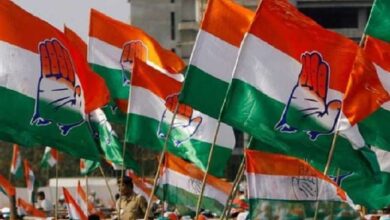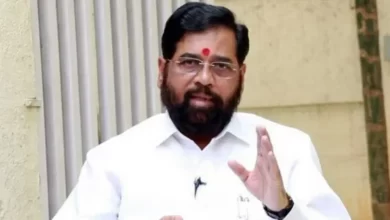how are farmers happy

Eighty percent of the farmers of the country do not have enough land to earn their livelihood.
Jayantilal Bhandari
Eighty percent of the farmers of the country do not have enough farmland to earn their livelihood, so the options for increasing their non-farm income will have to be increased. Food processing industry in rural areas will have to be given special incentives.
At present, four strategic needs are visible to provide relief to crores of small farmers of the country. First, after the withdrawal of the three agricultural laws, new agricultural reforms are needed. Second, to increase production and productivity in the agricultural sector. Three, faster implementation of the ownership plan of rural development and fourthly, more funds should be allocated for MGNREGA. Significantly, the farmers’ movement has come to an end. The farmers had agreed to end the agitation and return home after the government and the United Kisan Morcha agreed on other demands, including the Minimum Support Price (MSP) after the repeal of agricultural laws. Therefore, now such new agricultural reforms will have to be implemented, so that all the farmers get their benefits. Special benefit should be given to small farmers especially, whose condition is like that of agricultural labourers.
There remains a need for agricultural reforms to increase the growth rate of agriculture and the income of small farmers. It is to be known that the Prime Minister has announced the formation of a special committee to make agriculture profitable and to resolve the issues related to agriculture. Since the cost of cultivation is increasing continuously, it is necessary to increase the Minimum Support Price (MSP) of agricultural produce. In many countries of the world, government subsidies are given to farmers to prevent the fall in the market prices of agricultural produce. Presently MSP system is applicable to twenty three crops in India. During the Green Revolution, the system of MSP was made to promote the cultivation of wheat.
Later rice and other crops were brought under it. Even now, the announcement of MSP for crops other than wheat and rice crops remains only a symbolic announcement. In many states of the country, a large number of farmers are not able to take advantage of this. In such a situation, at this time when the United Farmers Front wants a legal guarantee of MSP of agricultural produce, then a proper assessment of the issue of legal guarantee of MSP is necessary. It is important to understand that there are many challenges and dangers behind the legal guarantee of MSP. Presently, the MSPs of many agricultural produce in the country are almost at par with the global commodity market prices. In such a situation, along with increasing inflation due to the guarantee of MSP, there is a crisis of reduction in the quality and productivity of agricultural produce. After the legal guarantee of MSP, the government will be bound to buy all agricultural produce.
Certainly, by encouraging small farmers in every possible way and special programs of agricultural development, the GDP has increased in the agriculture sector. Between the second quarter (July-September 2021) of the current financial year, the growth rate of the country’s economy has been 8.4 percent. The growth rate in agriculture was four and a half percent, which is the highest compared to the pre-Covid level. In such a situation, there is a need to further streamline the agricultural development programs currently being run in the country to boost the agricultural growth rate and increase the income of small farmers. Along with this, the central and state governments will also have to take measures to increase rural income. Still raising the income of farmers and rural poor remains a big challenge. A recent report by NITI Aayog has also said that more effective efforts are needed to reduce poverty in rural India. During the year 2015-16, 32.75 percent of the population in rural areas and 8.81 percent of the population in urban areas were found to be in multidimensional poverty.
Since eighty percent of the farmers of the country do not have enough farmland to earn their livelihood, the options for increasing their non-farm income will have to be increased. Food processing industry in rural areas will have to be given special incentives. Special efforts will have to be made to adopt modern methods of farming, agricultural research and innovation, change and improve agricultural education, promote horticulture, forestry and fisheries. Apart from wheat and rice, diversification of crops can also be beneficial for the farmers. The cultivation of eco-friendly nutritious cereals, pulses and oilseeds will have to be increased with incentives. This will create a large and stable market for the farmers. Better storage and marketing facilities will have to be developed by giving maximum incentives to Farmer Producer Associations. This will increase the bargaining power and reduce the pressure of middlemen.
Reforms in crop insurance scheme, to increase MSP by one and a half times, to get loan from banks at a cheaper rate from Kisan Credit Card, to increase agricultural exports rapidly, to create an agricultural infrastructure fund of one lakh crore rupees, to make five times the agriculture budget, Farmers have been benefited by schemes related to solar power reaching the farm, ten thousand new Farmer Production Organizations, agricultural products of small farmers reaching remote areas of the country through Kisan Rail and farmers getting good price for their produce. Due to these various adaptations, foodgrain production in the country has reached a record high in the year 2020-21. Similarly, during the year 2020-21, the total oilseeds production and the production of pulses in the country have also reached a record level. But now farmers will have to be given more incentives for higher targets of their production.
The new Agricultural Development Committee has to work towards increasing the minimum support price for agricultural produce. In view of the demands of the farmers, schemes like PM Asha and Bhavantar payment are also likely to be started. Farmers’ income can also be increased by special incentives to produce high-value variety crops and more cash transfers to the Jan Dhan accounts of small farmers. Apart from this, by increasing the scope of the ownership scheme being implemented in rural areas, the campaign of economic empowerment can be intensified by giving legal rights to the villagers for their residential land. This can go a long way in reducing poverty and unemployment in the villages. Swamitva Scheme in villages across the country can prove to be a milestone for farmers to easily meet various agricultural credit needs and increase non-farm income of farmers.
There is no doubt that this year (2021) Mahatma Gandhi Rural Employment Guarantee Scheme (MGNREGA) has played an effective role in increasing the income of people in rural India by providing them employment. While MGNREGA has given more employment to the people traditionally working in the villages, it has also given a large number of employment to the migrant workers who have returned from the cities to the villages due to the second wave of Corona. It is to be known that in the budget of the current financial year 2021-22, a provision of seventy three thousand crore rupees has been made for MNREGA. But in this financial year till March 2022, the demand for work under MGNREGA has increased, due to the need for additional support of at least thirty two thousand crore rupees under MGNREGA to meet the current needs of rural employment.
,






